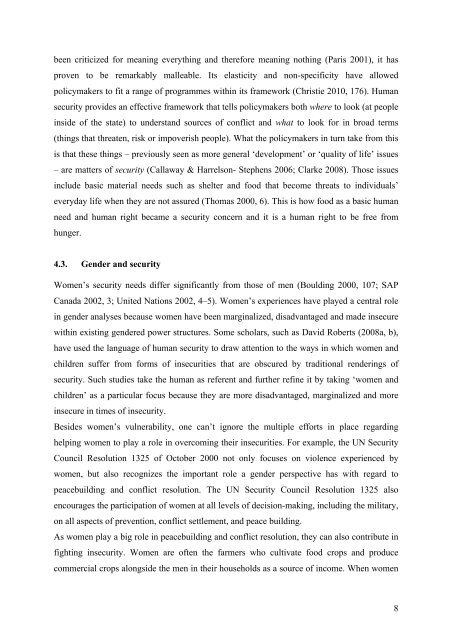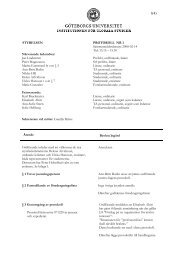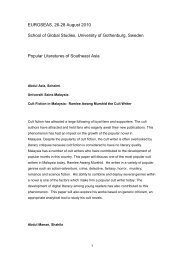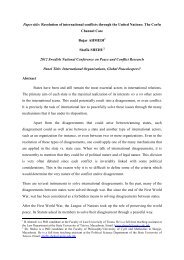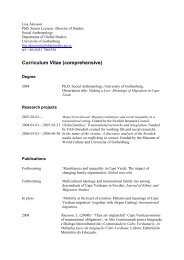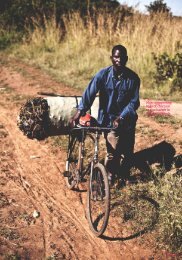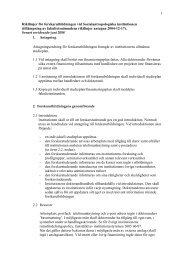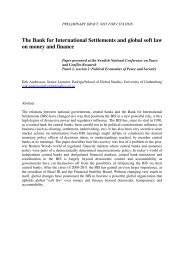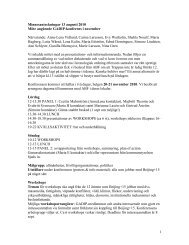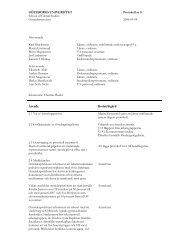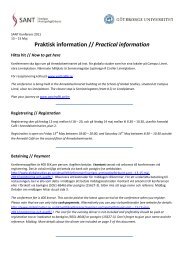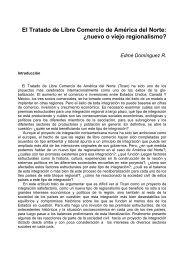1 Understanding food insecurity in rural Rwanda: how women ...
1 Understanding food insecurity in rural Rwanda: how women ...
1 Understanding food insecurity in rural Rwanda: how women ...
You also want an ePaper? Increase the reach of your titles
YUMPU automatically turns print PDFs into web optimized ePapers that Google loves.
een criticized for mean<strong>in</strong>g everyth<strong>in</strong>g and therefore mean<strong>in</strong>g noth<strong>in</strong>g (Paris 2001), it has<br />
proven to be remarkably malleable. Its elasticity and non-specificity have allowed<br />
policymakers to fit a range of programmes with<strong>in</strong> its framework (Christie 2010, 176). Human<br />
security provides an effective framework that tells policymakers both where to look (at people<br />
<strong>in</strong>side of the state) to understand sources of conflict and what to look for <strong>in</strong> broad terms<br />
(th<strong>in</strong>gs that threaten, risk or impoverish people). What the policymakers <strong>in</strong> turn take from this<br />
is that these th<strong>in</strong>gs – previously seen as more general ‘development’ or ‘quality of life’ issues<br />
– are matters of security (Callaway & Harrelson- Stephens 2006; Clarke 2008). Those issues<br />
<strong>in</strong>clude basic material needs such as shelter and <strong>food</strong> that become threats to <strong>in</strong>dividuals’<br />
everyday life when they are not assured (Thomas 2000, 6). This is <strong>how</strong> <strong>food</strong> as a basic human<br />
need and human right became a security concern and it is a human right to be free from<br />
hunger.<br />
4.3. Gender and security<br />
Women’s security needs differ significantly from those of men (Bould<strong>in</strong>g 2000, 107; SAP<br />
Canada 2002, 3; United Nations 2002, 4–5). Women’s experiences have played a central role<br />
<strong>in</strong> gender analyses because <strong>women</strong> have been marg<strong>in</strong>alized, disadvantaged and made <strong>in</strong>secure<br />
with<strong>in</strong> exist<strong>in</strong>g gendered power structures. Some scholars, such as David Roberts (2008a, b),<br />
have used the language of human security to draw attention to the ways <strong>in</strong> which <strong>women</strong> and<br />
children suffer from forms of <strong>in</strong>securities that are obscured by traditional render<strong>in</strong>gs of<br />
security. Such studies take the human as referent and further ref<strong>in</strong>e it by tak<strong>in</strong>g ‘<strong>women</strong> and<br />
children’ as a particular focus because they are more disadvantaged, marg<strong>in</strong>alized and more<br />
<strong>in</strong>secure <strong>in</strong> times of <strong><strong>in</strong>security</strong>.<br />
Besides <strong>women</strong>’s vulnerability, one can’t ignore the multiple efforts <strong>in</strong> place regard<strong>in</strong>g<br />
help<strong>in</strong>g <strong>women</strong> to play a role <strong>in</strong> overcom<strong>in</strong>g their <strong>in</strong>securities. For example, the UN Security<br />
Council Resolution 1325 of October 2000 not only focuses on violence experienced by<br />
<strong>women</strong>, but also recognizes the important role a gender perspective has with regard to<br />
peacebuild<strong>in</strong>g and conflict resolution. The UN Security Council Resolution 1325 also<br />
encourages the participation of <strong>women</strong> at all levels of decision-mak<strong>in</strong>g, <strong>in</strong>clud<strong>in</strong>g the military,<br />
on all aspects of prevention, conflict settlement, and peace build<strong>in</strong>g.<br />
As <strong>women</strong> play a big role <strong>in</strong> peacebuild<strong>in</strong>g and conflict resolution, they can also contribute <strong>in</strong><br />
fight<strong>in</strong>g <strong><strong>in</strong>security</strong>. Women are often the farmers who cultivate <strong>food</strong> crops and produce<br />
commercial crops alongside the men <strong>in</strong> their households as a source of <strong>in</strong>come. When <strong>women</strong><br />
8


